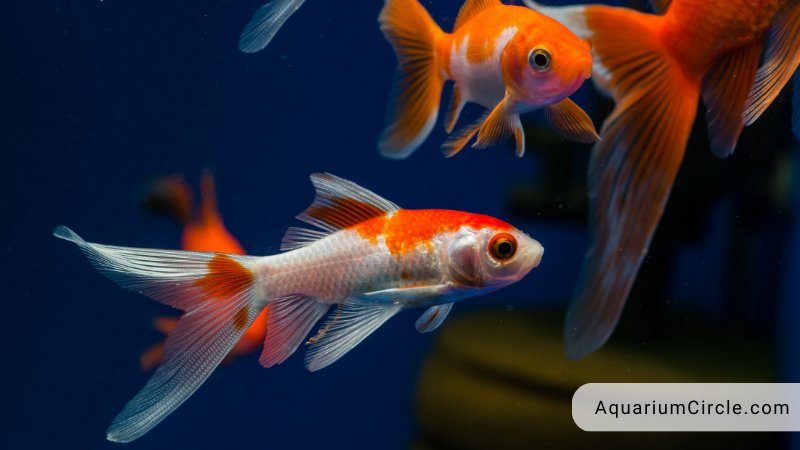Comet goldfish is one of the most popular and beloved species of aquarium fish that have captured the hearts of aquarium enthusiasts worldwide. Known for their vibrant colors, long and flowing tails, and lively personalities, these fish have become a favorite among both novice and experienced fish keepers alike. In this blog post, we will delve into the world of comet goldfish, exploring their history, care requirements, interesting facts, and much more. Whether you’re a seasoned aquarium hobbyist or a beginner looking to get started, this post will provide you with valuable insights into these fascinating and beautiful fish.
See also:
- Goldfish With Big Head – Oranda Goldfish Care Guide & Everything You Should Know
- Fantail Goldfish: Care Guide, Lifespan, Tank Size, Tank Mates In Aquarium And More
- Black Moor Goldfish: Care Guide, Breeding, Lifespan,tank Size, Tank Mates And More
Comet Goldfish Overview
The Comet Goldfish, renowned for its distinctive appearance and charming demeanor, has gained worldwide popularity as one of the most sought-after varieties of goldfish. Originating in the 1880s as a result of selective breeding from the common Goldfish, it quickly rose to prominence due to its striking beauty and ease of care. These fish have since become a ubiquitous sight, available for purchase at local pet stores, showcased at carnivals as prized attractions, and even utilized as feeder bait in angler shops owing to their prolific breeding nature.
Despite not being found in the wild, their care requirements remain analogous to those of their wild ancestors, indicating their close genetic relationship to their predecessors. As we delve further into this post, we will gain a deeper understanding of the Comet Goldfish’s intriguing history, unique characteristics, and essential care requirements.
Comet Goldfish Size, Color, Shape
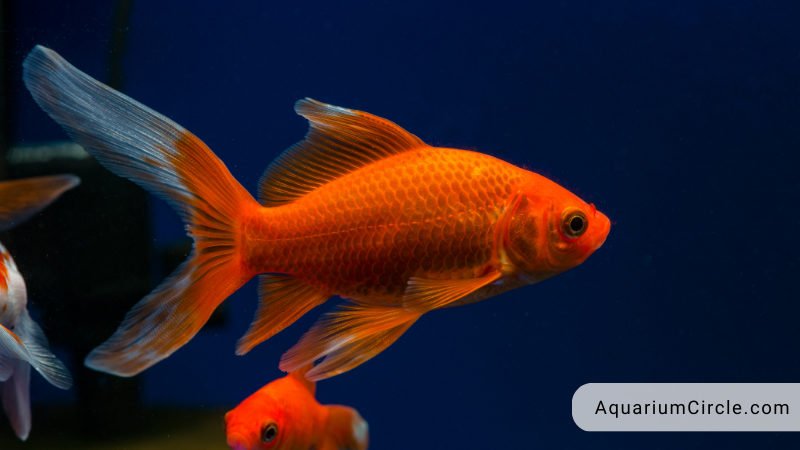
One of the most striking features of comet goldfish is their vivid and eye-catching colors. They come in a wide range of colors, including bright shades of orange, yellow, and red. Some have metallic scales that shimmer in the light, while others have a matte finish. The color of a comet goldfish may change or intensify as it ages, with some individuals developing deeper, more vibrant hues over time.
Another notable physical characteristic of comet goldfish is their forked tail. Unlike other goldfish species, which typically have rounded tails, comet goldfish have a split or “V” shaped tail that gives them a distinctive appearance. Their dorsal fin is also longer and more pointed than that of other goldfish varieties, adding to their unique and attractive look.
Comet goldfish are generally hardy and easy to care for, making them a popular choice among aquarium enthusiasts. They can thrive in a wide range of water conditions, although they do require a spacious aquarium with plenty of room to swim and play. Providing a healthy diet, clean water, and a stimulating environment will help ensure that your comet fish thrives and displays its stunning physical features to their fullest potential.
History and origins of Comet Goldfish
Comet goldfish have a fascinating history that can be traced back to the late 19th century. The story begins in the United States, where goldfish breeding was gaining popularity as a hobby. At the time, the common goldfish was the most commonly bred variety, and it was highly sought after for its vibrant colors and hardiness.
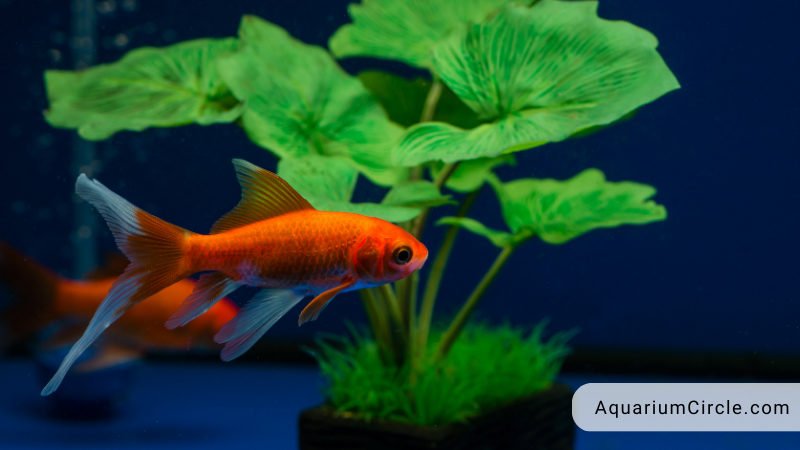
In 1880, a breeder named Hugo Mulert noticed an unusual goldfish among his stock. This particular fish had a slender body, a long tail, and a bright orange coloration. Mulert recognized that this fish had the potential to become a new and exciting variety of goldfish, so he began to selectively breed it with other common goldfish to produce more specimens with these unique characteristics.
Over time, Mulert’s breeding efforts resulted in a new variety of goldfish, which he named the comet goldfish. The comet goldfish was first introduced to the public in 1893 at the World’s Columbian Exposition in Chicago, where it quickly became a hit with visitors. Its striking appearance and lively personality made it a favorite among aquarium enthusiasts, and it soon became one of the most popular varieties of goldfish in the world.
Since then, comet goldfish breeding has become widespread, and they can now be found in pet stores and aquariums worldwide. Despite their popularity, comet goldfish remain a remarkable and fascinating species with a rich history and a distinctive appearance that continues to captivate fish enthusiasts around the world.
Varieties of Comet Goldfish
While the comet goldfish is a distinct variety of goldfish, there are several different types and sub-varieties within this group. Here are a few examples of comet goldfish varieties:
- Red comet: This is the most common and recognizable variety of comet goldfish. Red comets are typically bright orange or red in color, with white bellies and a forked tail. They are hardy and easy to care for, making them a popular choice for beginners.
- Sarasa comet goldfish: The sarasa comet is a type of comet goldfish that has a white body with bright red markings. These markings can be in the form of spots, stripes, or patches, and are highly sought after for their striking appearance.
- Shubunkin comet: The shubunkin comet is a type of comet goldfish that has a blue-gray body with splashes of red, orange, and white. They are known for their calico-like coloration and are a popular choice among goldfish enthusiasts.
- Calico comet: The calico comet is a variety of comet goldfish that has a white body with patches of red, orange, and black. They are a stunning and unique-looking fish that can add a lot of visual interest to an aquarium.
- Black comet: The black comet is a rare variety of comet goldfish that has a dark, almost black body coloration. They are highly sought after by collectors and are prized for their striking and unusual appearance.
Each of these comet goldfish varieties has its own unique appearance and characteristics, making them a fascinating and diverse group of fish to observe and care for.
Comet Goldfish Lifespan
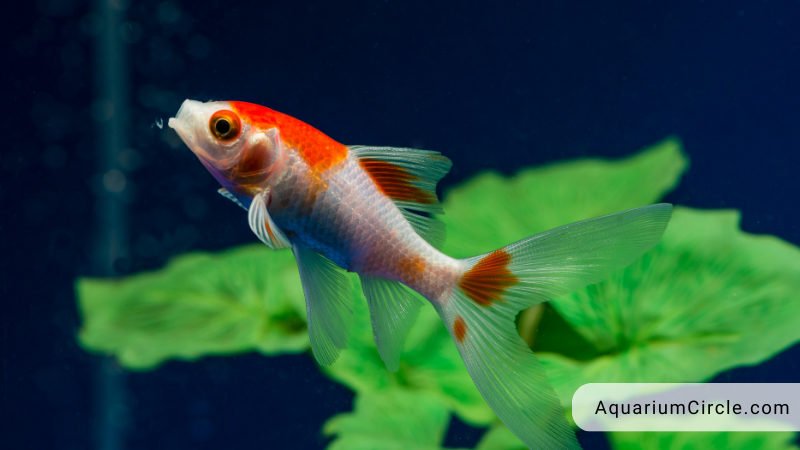
The lifespan of a comet goldfish can vary depending on various factors such as the quality of care provided, genetics, and environmental conditions. However, in general, comet goldfish have a lifespan of around 10 to 15 years when kept in optimal conditions.
With proper care and a healthy environment, some comet goldfish have been known to live for up to 20 years or more. Factors that can influence the lifespan of a comet goldfish include maintaining high water quality, providing a nutritious and balanced diet, and ensuring adequate space and exercise.
It’s also essential to note that comet goldfish can grow quite large, up to 12 inches in length or more, depending on the conditions they are kept in. Providing a suitable aquarium or pond environment that can accommodate their growth is crucial for their long-term health and well-being.
Overall, comet goldfish can make wonderful long-term pets when provided with the proper care and environment they need to thrive. With a lifespan of up to 15 years or more, they can be a beloved addition to any aquarium or pond for many years to come.
Comet Goldfish Tank Mates
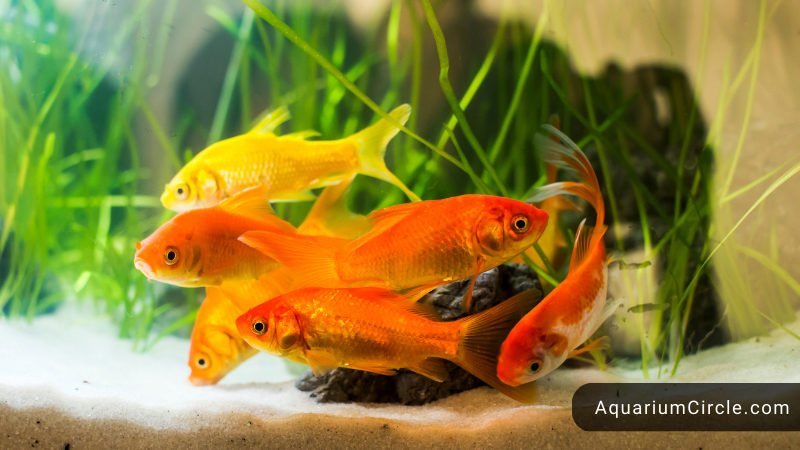
When asking what fish should I keep Comet Goldfish with?”, it’s essential to consider their size and temperament, as well as their compatibility with other fish species. Here are some suitable tank mates for comet goldfish:
- Other goldfish: Comet goldfish can thrive with other types of goldfish, including fancy goldfish and common goldfish. However, it’s important to keep in mind that goldfish are active swimmers and require plenty of space to move around, so providing a large enough tank or pond is essential.
- Koi: Koi and comet goldfish are compatible tank mates, as they have similar care requirements and temperaments. They are both active swimmers and can coexist peacefully in a large enough pond or tank.
- Barbs: Some species of barbs, such as cherry barbs and gold barbs, can coexist peacefully with comet goldfish. However, it’s important to ensure that the barbs are not too small, as comet goldfish may see them as prey.
- Loaches: Some types of loaches, such as dojo loaches and clown loaches, can make good tank mates for comet goldfish. They are bottom-dwelling fish that can help keep the tank clean and free of algae.
- Plecos: Plecos are a type of catfish that can coexist peacefully with comet goldfish. They are bottom-dwelling fish that can help keep the tank clean and free of algae.
It’s important to note that not all fish species are compatible with comet goldfish, and some may become aggressive or territorial. Always research each fish species’ temperament and care requirements before adding them to a tank or pond with comet goldfish.
See also: Can Betta Fish Live With Goldfish? – 3 Reasons Why They Are Not Along
Tips for introducing new fish to a Comet Goldfish tank
Introducing new fish to a comet goldfish tank can be a delicate process. Here are some tips to help ensure a smooth transition for both your comet goldfish and the new fish:
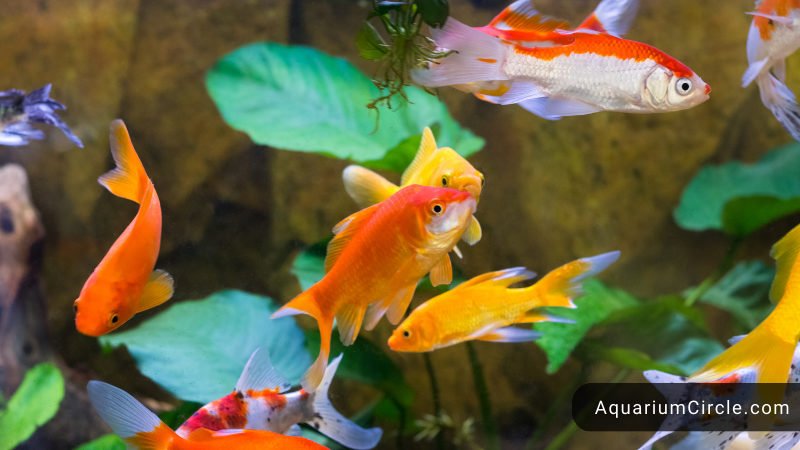
- Quarantine new fish: Before introducing any new fish to your comet goldfish tank, it’s important to quarantine them for at least two weeks in a separate tank. This can help prevent the spread of diseases or parasites that could harm your existing fish.
- Gradually acclimate the new fish: Once the quarantine period is over, it’s essential to acclimate the new fish slowly to the water conditions in your comet goldfish tank. This can be done by floating the bag containing the new fish in the tank for about 30 minutes, gradually adding small amounts of tank water to the bag every 5-10 minutes.
- Monitor the fish closely: After introducing the new fish to the tank, it’s essential to monitor them closely for the first few days to ensure they are adjusting well and are not being bullied or harassed by the existing fish.
- Consider adding fish of similar size and temperament: When selecting new fish to add to a comet goldfish tank, it’s important to consider their size and temperament. Adding fish of similar size and temperament can help prevent aggression and territorial behavior.
- Avoid overcrowding: Overcrowding can lead to stress, disease, and other health problems for fish. Ensure that your comet goldfish tank has enough space for all fish to swim and move comfortably.
By following these tips, you can help ensure a smooth and successful introduction of new fish to your comet goldfish tank.
Comet Goldfish Care Guide: Tank Size, Diet, Health Issue And More
Now we’ve given you a good basic knowledge of comet goldfish, including information about their look, lifespan, and the fish species that can cohabit with them in an aquarium, but that’s not enough. We’ll provide you more detailed information on how to take care of them.
Tank size and water quality requirements
Comet goldfish are active and social fish that require a large tank or pond with proper filtration to thrive. Here are some guidelines for tank size and water quality requirements:
- Tank size: A 55-gallon tank is the minimum size for a single comet goldfish, while a larger group of two or more goldfish should be housed in a tank of at least 75 gallons. A larger tank provides more swimming space and helps dilute waste, reducing the need for frequent water changes. Additionally, goldfish produce a lot of waste, so a larger tank with a higher water volume can help maintain better water quality.
- Filtration: A good filtration system is essential for maintaining healthy water conditions in a comet goldfish tank. A filter should be able to process the tank water at least three to four times per hour, meaning that a 55-gallon tank would require a filter with a flow rate of at least 200-300 gallons per hour. Biological filtration is particularly important, as it breaks down toxic waste into less harmful compounds. It’s also important to clean or replace filter media regularly to maintain efficiency.
- Water temperature and pH: Comet goldfish are coldwater fish and prefer water temperatures between 65-75°F. Temperatures above 75°F can increase the risk of disease and lower oxygen levels, while temperatures below 50°F can slow their metabolism and cause health problems. The pH level should be maintained between 7.0 and 8.4, with a target range of 7.2-7.6.
- Water hardness: Water hardness refers to the amount of dissolved minerals in the water, particularly calcium and magnesium. Comet goldfish can tolerate a wide range of water hardness levels, but a general range of 100-250 ppm is recommended. Hard water can help support their bone development, while soft water can lead to health problems.
- Avoid overfeeding: Overfeeding can cause goldfish to produce excess waste, leading to poor water quality and health problems. Feed your comet goldfish small amounts of food twice a day, and remove any uneaten food within a few minutes to prevent it from decomposing in the tank. A varied diet of high-quality pellets, flakes, and frozen or live foods is recommended.
See also: 20 Gallon Fish Tank Goldfish: How Many Goldfish In A 20 Gallon Tank?
Feeding habits and diet recommendations
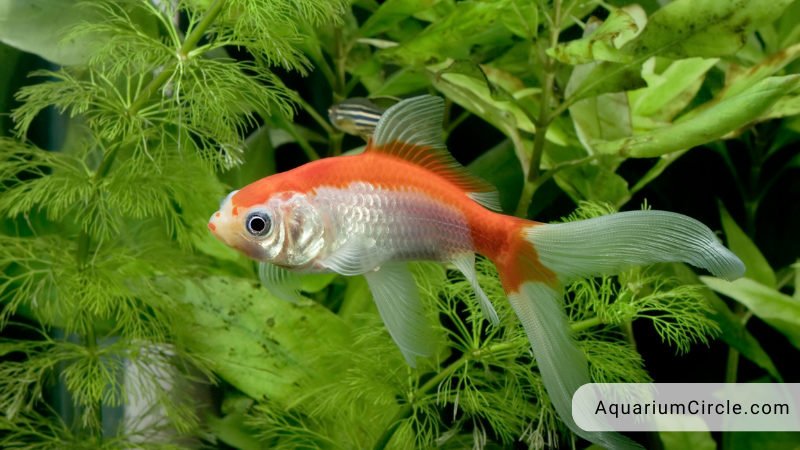
Comet goldfish are omnivores and have a hearty appetite, so it’s important to provide them with a balanced and varied diet. Here are some tips on feeding habits and diet recommendations:
- Frequency: Feed your comet goldfish small amounts of food twice a day, rather than one large feeding. This helps prevent overfeeding and reduces waste buildup in the tank.
- Portion size: The amount of food you feed your goldfish depends on their size and age. A good rule of thumb is to feed them an amount of food that they can consume within two to three minutes. Overfeeding can lead to health problems, such as swim bladder issues and obesity.
- Types of food: Goldfish pellets and flakes are the most common staple foods for comet goldfish. Look for high-quality brands that contain a balanced mix of protein, fiber, and vitamins. You can also supplement their diet with frozen or live foods, such as bloodworms, brine shrimp, and daphnia. These foods provide a good source of protein and are a great way to add variety to their diet.
- Avoid overfeeding: Overfeeding can cause goldfish to produce excess waste, leading to poor water quality and health problems. Feed your comet goldfish small amounts of food twice a day, and remove any uneaten food within a few minutes to prevent it from decomposing in the tank.
- Treats: Treats should be given sparingly and should not replace a balanced diet. Goldfish enjoy occasional treats such as peas (with the shells removed), cucumber, and zucchini. These foods provide fiber and help aid in digestion.
Remember to always monitor your comet goldfish’s diet and adjust as needed based on their appetite and behavior. A balanced diet and proper feeding habits will help keep your goldfish healthy and happy.
See also: Can Overfeeding Goldfish Kill Them? 5 Tips To Avoid Overfeeding
Common health issues and how to prevent them
Comet goldfish are hardy fish that can adapt to a variety of environments. However, they are still prone to certain health issues that can affect their wellbeing. Here are some common health issues and tips on how to prevent them:
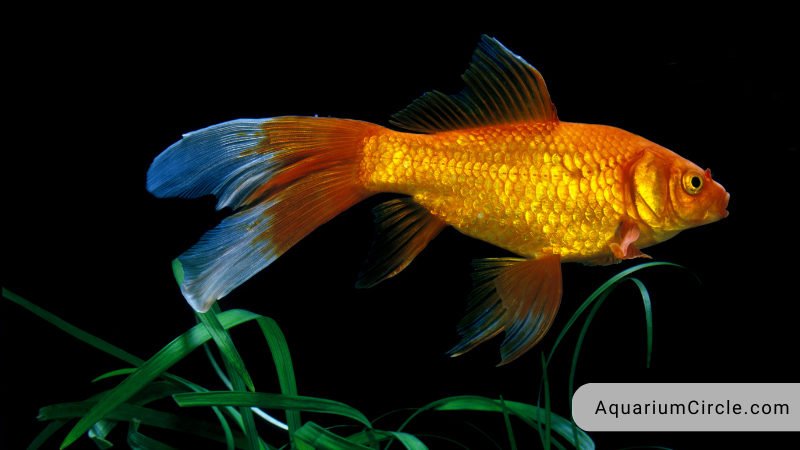
- Swim bladder disorder: This condition affects a fish’s ability to regulate their buoyancy, causing them to swim upside down or sideways. Swim bladder disorder can be caused by overfeeding, constipation, or poor water quality. To prevent swim bladder disorder, avoid overfeeding and provide a balanced diet. You can also add aquarium salt to the tank to help with constipation.
- Ich: Ich, or white spot disease, is a common parasitic infection that affects many types of fish. It appears as white spots on the fish’s body and can cause lethargy and loss of appetite. To prevent ich, maintain good water quality, avoid overcrowding, and quarantine new fish before introducing them to the tank.
- Fin rot: Fin rot is a bacterial infection that can cause the fins to become frayed or discolored. It can be caused by poor water quality or stress. To prevent fin rot, maintain good water quality and avoid overcrowding. If you notice signs of fin rot, treat the affected fish with an antibiotic medication.
- Dropsy: Dropsy is a bacterial infection that affects a fish’s internal organs, causing fluid to accumulate in the body. Symptoms include a swollen belly, bulging eyes, and lethargy. Dropsy can be caused by poor water quality or stress. To prevent dropsy, maintain good water quality and avoid overcrowding.
- Parasites: Goldfish can be affected by various parasites, including flukes, anchor worms, and lice. These parasites can cause irritation, loss of appetite, and even death. To prevent parasites, maintain good water quality and quarantine new fish before introducing them to the tank. You can also treat the tank with medication if you notice signs of a parasite infestation.
- Mouth fungus: Also known as cotton mouth or columnaris, this is a bacterial infection that affects the mouth and fins of the fish. It appears as white, fuzzy patches and can cause loss of appetite and lethargy. Mouth fungus can be caused by poor water quality or stress.
- Velvet: Velvet is a parasitic infection that appears as a yellowish or brownish dust on the fish’s body. It can cause lethargy, loss of appetite, and scratching. Velvet is highly contagious and can be caused by stress or poor water quality.
- Lice: Fish lice are small crustaceans that attach themselves to the fish’s body, causing irritation, redness, and inflammation. They can be introduced to the tank through infected fish or contaminated water. Lice can be treated with medication, but it’s important to remove any infected fish from the tank to prevent the spread of the parasites.
To prevent these diseases, it’s important to maintain good water quality, avoid overfeeding, and quarantine new fish before introducing them to the tank. Regular observation of your comet goldfish’s behavior and appearance can help catch any signs of illness early on, so you can take appropriate action.
Breeding Comet Goldfish
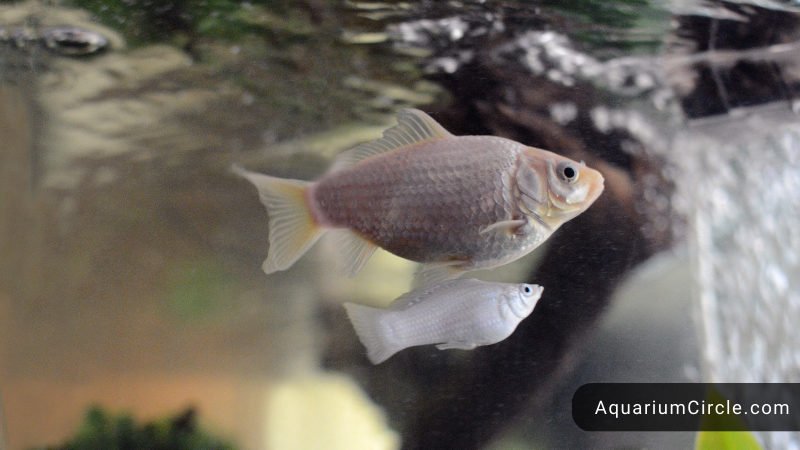
Breeding comet goldfish can be an exciting and rewarding process. Here we’ll provide you a step-by-step guide to breeding comet goldfish:
- Preparing the breeding tank: The first step in breeding comet goldfish is to set up a breeding tank. They should be kept in a at least 20 gallon tank and the breeding tank should have a sponge filter or other gentle filtration system. The temperature of the water should be gradually increased to 75-78°F.
- Choosing the breeding fish: Once the breeding tank is ready, choose a male and female comet goldfish that are in good health and have reached breeding age (around two years old). You can determine the sex of the fish by looking at their vents. The female’s vent will be round and swollen, while the male’s vent will be thin and pointed.
- Introducing the breeding fish: Place the breeding fish in the breeding tank and observe their behavior. The male will begin to chase the female around the tank, nudging her sides and pushing her towards the spawning material.
- Providing spawning material: To encourage breeding, provide the breeding fish with a spawning mop or other suitable spawning material. The female will lay her eggs on the material, and the male will fertilize them.
- Removing the breeding fish: Once the spawning process is complete, remove the breeding fish from the breeding tank to prevent them from eating the eggs or fry.
- Caring for the eggs: The eggs will hatch within a few days, and the fry will emerge. The fry will attach themselves to the spawning material, and they will begin to swim and feed after a few days. Keep the water in the breeding tank clean and well-oxygenated, and feed the fry small amounts of commercial fry food or freshly hatched brine shrimp several times a day.
- Raising the fry: As the fry grow, you may need to transfer them to a larger tank or separate them into groups to prevent overcrowding. Continue to monitor water quality, temperature, and feeding habits to ensure the health and growth of the fry.
Tips for breeding comet goldfish successfully
Breeding comet goldfish can be a fun and educational experience, but it requires some knowledge and effort. With the right preparation and care, you can successfully breed your own comet goldfish and enjoy watching them grow and thrive. Here are some tips for breeding comet goldfish:
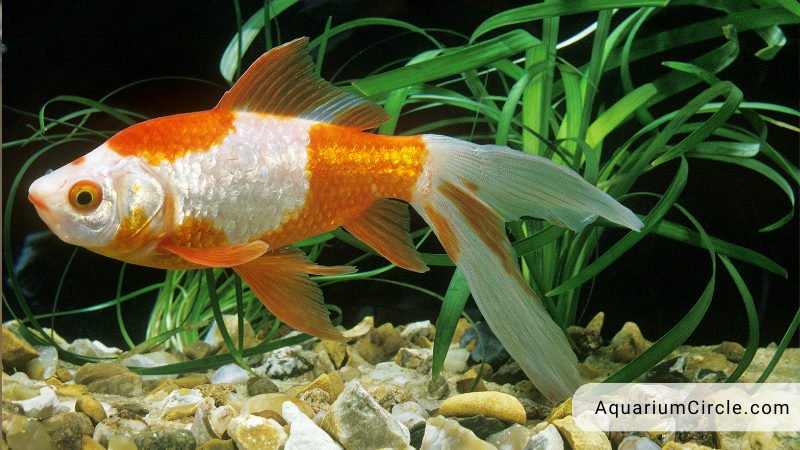
- Choose healthy and mature fish: Make sure that the fish you select for breeding are healthy, active, and of breeding age (usually around two years old). Avoid using fish that are too young, too old, or showing signs of illness.
- Provide a suitable breeding environment: Comet goldfish prefer to breed in a calm and peaceful environment, with plenty of hiding places and plants. You can use a separate breeding tank or section off a part of your main tank to create a suitable breeding environment.
- Monitor water quality: Water quality is crucial for successful breeding, so make sure to keep the water clean and well-oxygenated. You may need to perform more frequent water changes and use a high-quality filtration system.
- Stimulate breeding behavior: You can stimulate breeding behavior by gradually increasing the water temperature (up to 75-78°F), feeding the fish a high-quality diet, and providing a breeding mop or other spawning material.
- Observe the breeding process: When the fish are ready to breed, the male will begin to chase the female around the tank, nudging her sides and pushing her towards the spawning material. The female will release eggs, which the male will then fertilize.
- Remove the adult fish: Once spawning is complete, remove the adult fish from the breeding tank to prevent them from eating the eggs or fry. You can use a net or a separate tank to transfer the adults.
- Care for the eggs and fry: The eggs will hatch within a few days, and the fry will need to be fed small, frequent meals of brine shrimp or commercial fry food. You may need to separate the fry into a separate tank to ensure their safety and proper development.
How to care for baby comet goldfish (fry)?
Caring for baby comet goldfish, also known as fry, requires a bit of extra attention and care to ensure their healthy development. Here are some tips on how to care for baby comet goldfish:
- Feeding: Fry have small stomachs and require frequent feeding. Feed them small amounts of commercial fry food or freshly hatched brine shrimp several times a day. As they grow, you can gradually increase the amount of food and decrease the frequency of feedings.
- Water quality: Keep the water in the fry tank clean and well-oxygenated. Change the water frequently to maintain good water quality and prevent the buildup of harmful substances. Use a sponge filter or other gentle filtration system to avoid sucking up the fry.
- Tank size: As the fry grow, they will need more space. Move them to a larger tank or separate them into groups to prevent overcrowding.
- Temperature: Keep the water temperature in the fry tank at a consistent level. The ideal temperature for baby comet goldfish is around 75-78°F.
- Observation: Observe the fry regularly to check for any signs of illness or deformities. Treat any health issues promptly to prevent them from spreading to the other fry.
- Patience: Raising baby comet goldfish takes time and patience. Be prepared to devote the necessary time and attention to ensure their healthy development.
By following these tips, you can provide the best possible care for your baby comet goldfish and help them grow into healthy and happy adults.
Fun Facts About Comet Goldfish That You May Care About
Why they’re called “comets”?
Well, as it turns out, comet goldfish are named after the famous space objects because they both have long, flowing tails that trail behind them as they move through their respective environments. And who knows, maybe if you squint really hard, you might even be able to see a little goldfish-shaped comet streaking across the sky!
Do you know the longest-lived goldfish in history?
The longest-lived goldfish on record is a common goldfish named Tish, who lived for 43 years in a pond in the UK. Tish was won as a prize at a fair in 1956 and was estimated to be around 10 years old when she died in 1999. Tish’s owners attributed her longevity to the fact that she lived in a large, well-maintained pond with plenty of room to swim and explore, and was fed a healthy diet of high-quality fish food and occasional treats like lettuce and peas. Tish’s remarkable lifespan is a testament to the importance of providing proper care and environment for your goldfish.
Video About Comet Goldfish
FAQs
How big do comet goldfish get?
Comet goldfish can grow up to 14 inches in length, making them one of the largest species of goldfish.
Can comet goldfish live in a bowl?
No, comet goldfish cannot live in a bowl as they require a large aquarium with a minimum of 20 gallons of water per fish.
Are comet goldfish good pets?
Yes, comet goldfish can make good pets for aquarium enthusiasts who have the knowledge and resources to provide them with suitable care and maintenance. They are lively, interesting, and have unique personalities.
References

Annette M. Chaney is an experienced marine biologist with over 20 years of experience as an aquarist and fishkeeper. She started her first aquarium at a young age, filling it with frogs and goldfish obtained from the ten-cent pet store.
Annette grew up caring for and breeding African Cichlids, which led to a hobby in high school that doubled as a profitable means. Attending Reed College gave her time to solidify herself as an accomplished aquarium caretaker with an eye for sales. After that, from 2009 – 2013, she studied at Roger Williams University – one of the most prestigious universities for Aquaculture and Aquarium in USA. She is the founder of AquariumCircle since 2010.
